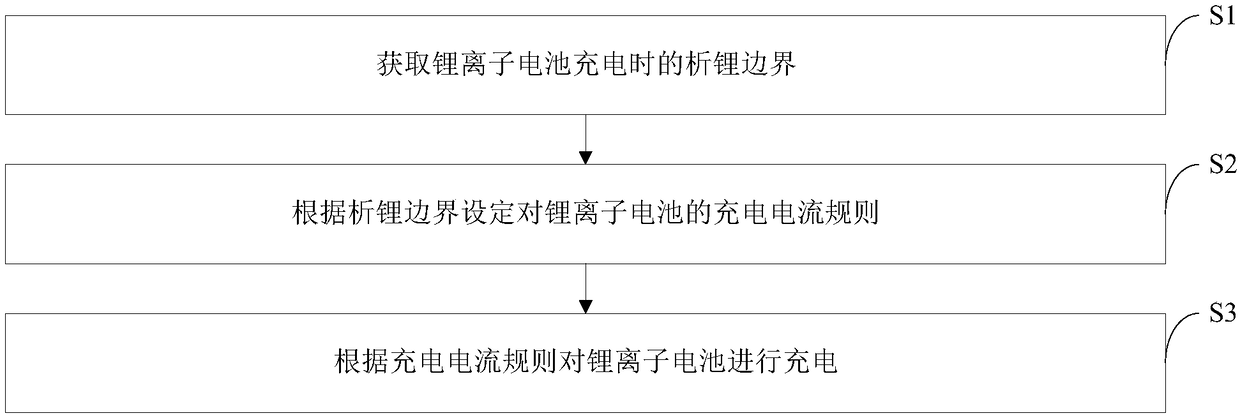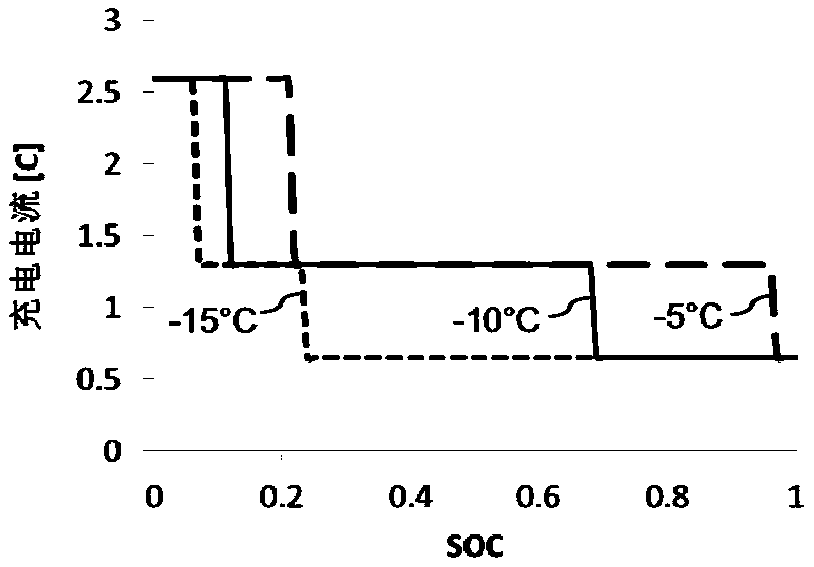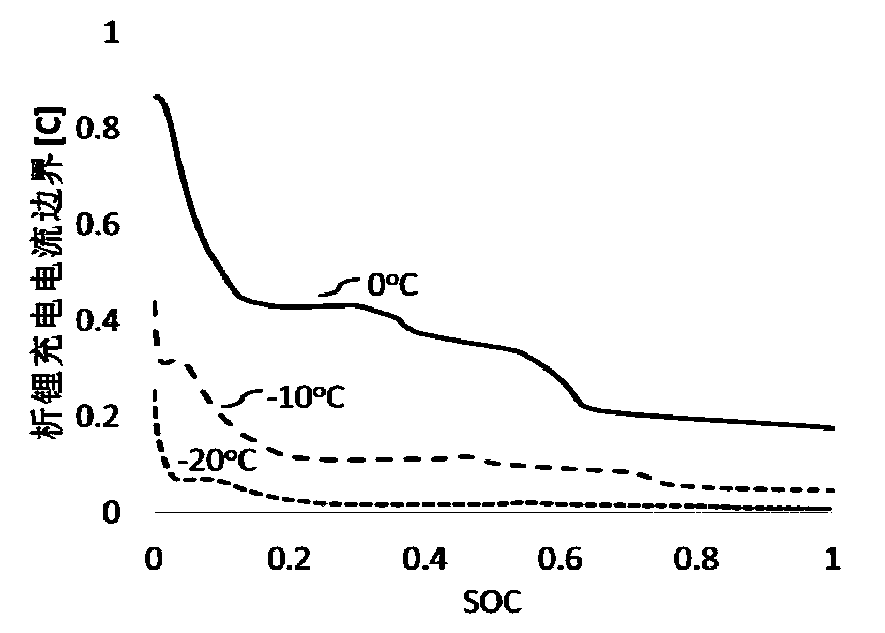A kind of fast charging method of lithium ion battery that can prevent lithium analysis
A lithium-ion battery, fast charging technology, applied in secondary battery charging/discharging, secondary battery repair/maintenance, etc., can solve problems affecting battery safety and cycle life, increasing charging current, etc., so as not to affect charging , the effect of fast charging
- Summary
- Abstract
- Description
- Claims
- Application Information
AI Technical Summary
Problems solved by technology
Method used
Image
Examples
Embodiment 1
[0045] In the present embodiment, the lithium-ion battery fast charging method comprises the following steps:
[0046] Step 1: Use the thermal-electrochemical model of lithium-ion batteries to obtain the initial state of charge of a certain battery when charging at different temperatures and different charging currents, that is, the boundary of the state of charge of lithium analysis.
[0047]The condition used to determine the lithium analysis boundary is that the difference between the solid phase potential and the liquid phase potential at the interface between the negative electrode of the lithium ion battery and the separator is equal to the lithium analysis reaction potential.
[0048]
[0049] Table 1
[0050] As shown in Table 1, taking -10°C as an example, when the battery is charged at 2.6C to 12% SOC, lithium precipitation begins to occur; when charged at 1.3C to 69% SOC, lithium precipitation begins to occur; It can be charged to a fully charged state without l...
Embodiment 2
[0057] Step 1: Use the thermal-electrochemical model of lithium-ion batteries to obtain the maximum charging current that does not trigger lithium analysis for a certain battery at different temperatures and states of charge, that is, the lithium-ion charging current boundary.
[0058] image 3 It is a schematic diagram of the lithium charging current boundary of the second embodiment of the present invention. like image 3 As shown, when using the thermal-electrochemical model of lithium-ion batteries to determine the boundary conditions for lithium analysis, the judgment condition adopted is that the difference between the solid-phase potential and the liquid-phase potential at the interface between the negative electrode of the lithium-ion battery and the separator is equal to the lithium-ion reaction potential. from image 3 It can be seen that the boundary of lithium analysis current increases with the increase of battery temperature and decreases with the increase of b...
PUM
 Login to View More
Login to View More Abstract
Description
Claims
Application Information
 Login to View More
Login to View More - R&D
- Intellectual Property
- Life Sciences
- Materials
- Tech Scout
- Unparalleled Data Quality
- Higher Quality Content
- 60% Fewer Hallucinations
Browse by: Latest US Patents, China's latest patents, Technical Efficacy Thesaurus, Application Domain, Technology Topic, Popular Technical Reports.
© 2025 PatSnap. All rights reserved.Legal|Privacy policy|Modern Slavery Act Transparency Statement|Sitemap|About US| Contact US: help@patsnap.com



